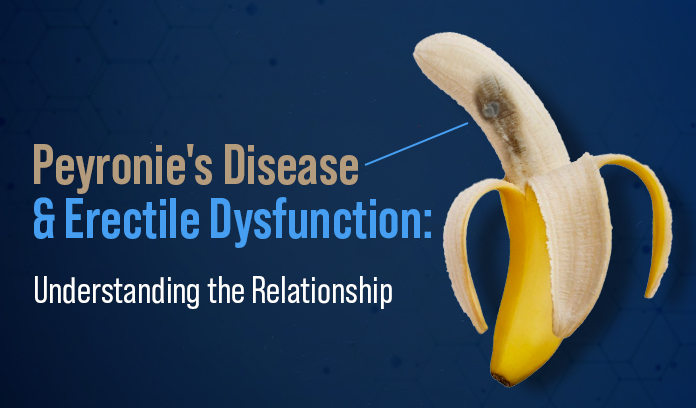Peyronie’s disease and erectile dysfunction are two distinct conditions that can affect men’s sexual health. Even though they are separate medical conditions, there is a close relationship between them. Peyronie’s disease is the growth of fibrous scar tissue within the penis, which may cause penile curvature, pain, and even difficulty during sexual activity. On the other hand, erectile dysfunction is the inability to obtain or sustain an erection strong enough for sexual engagement. The blog will examine the relationship between Peyronie’s disease and erectile dysfunction, as well as its underlying causes and available treatment options.
Understanding Peyronie’s Disease
Peyronie’s disease is a condition that mostly affects middle-aged men but can occur at any age. It occurs when there is an abnormal buildup of collagen, leading to the formation of fibrous plaques or scar tissue within the tunica albuginea, that protects the penis’ erectile tissue. Scar tissue can cause the penis to bend, making erections painful and difficult to maintain. The degree of curvature can vary from minor to severe, and have a significant impact on a man’s sexual function and self-esteem.
The Connection with Erectile Dysfunction
- Physical Obstruction: It may be challenging to achieve or maintain an erection if there is scar tissue present in the penis as a result of Peyronie’s disease. The fibrous plaques may compress the blood vessels that are responsible for filling the erectile tissue during arousal, which could result in inadequate blood flow and erectile difficulties.
- Psychological Impact: Erectile dysfunction and Peyronie’s disease both can have a psychological effect on affected individuals. Men with Peyronie’s disease may experience anxiety, depression, and lower self-confidence due to the visible penile curvature and difficulties they would face with sexual function. These psychological factors can lead to erectile dysfunction or worsen the existing erectile problems.
- Shared Risk Factors: Both Peyronie’s disease and erectile dysfunction may share some common risk factors such as age, smoking, blood sugar, hypertension, and certain connective tissue disorders. These risk factors can contribute to the development of both conditions simultaneously.
Seeking Professional Help
Men experiencing erectile dysfunction or Peyronie’s disease should seek professional help to effectively treat the conditions. Early medical intervention is necessary to provide appropriate medical treatment options to address both conditions. It can help manage symptoms, prevent further complications and improve the overall quality of life.
Conclusion
Peyronie’s disease and erectile dysfunction are two interconnected conditions that can impact men’s sexual health and the overall quality of their life. Seeking professional advice and open communication with your health providers can help regain your sexual confidence and improve the quality of life for those experiencing these conditions. Remember, timely intervention and support can make a huge difference in managing these challenging conditions.

